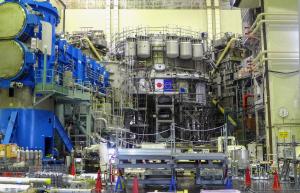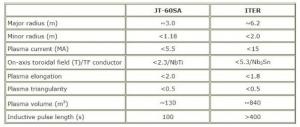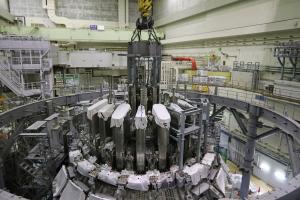Japan and Europe complete the assembly of JT-60SA
The JT-60SA fusion experiment in Naka, Japan, is designed to explore advanced plasma physics in support of the operation of ITER and next-phase devices. After seven years of assembly, the project—financed and executed jointly by Europe and Japan—is ready for commissioning.
In autumn 2020, five years before ITER is scheduled to begin operating, an upgraded tokamak experiment in Japan will celebrate its First Plasma. Like ITER, it is a magnetic confinement fusion device, with a tokamak about half the size of ITER's.
A satellite in support of ITER
JT-60SA is a fully superconducting tokamak capable of confining high-temperature deuterium plasmas for 100-second pulses, with a plasma current up to ~5.5 MA, a large amount of power available for plasma heating and current drive, and a water-cooled divertor designed for heat fluxes of 15 MW/m². It will be able to operate a wide range of plasma shapes (elongations and triangularities) and aspect ratios. With a plasma volume of ~130 m³, the device will take the lead as the world's largest operating tokamak ... until the operation of ITER, that is.
After the positioning of the cryostat top lid in March—the final task of main body assembly—ITER Director-General Bernard Bigot sent these words of congratulations: "Warmest congratulations to the team's successful completion of the JT-60SA tokamak. It is indeed a magnificent demonstration of QST capacity and of the collaboration established by Europe and Japan, to complete this critical milestone on time. We look forward to the first plasma on JT-60SA this autumn."
Integrated commissioning—a series of functional tests (vacuum pumping, magnet cool down ...) and machine operation with plasmas (including the device's first plasma)—is planned toward the end of the year.
See a full report here.
For more information, see: Broader Approach, QST, Fusion for Energy.
¹ The Broader Approach Agreement was signed in 2007 between EURATOM and the Government of Japan. Both Parties agreed to continue second-phase Broader Approach activities ("BA phase II") in March 2020.




